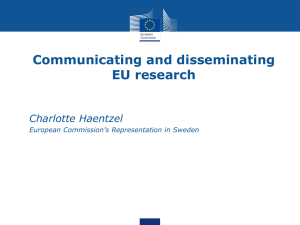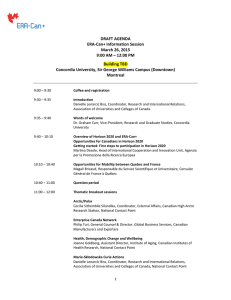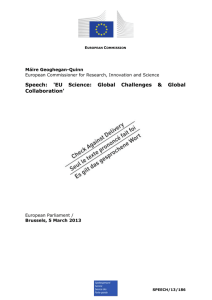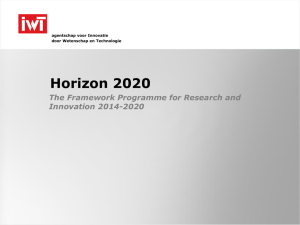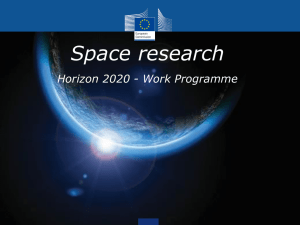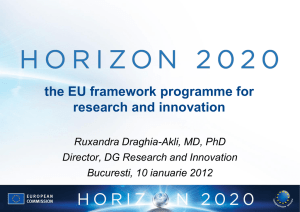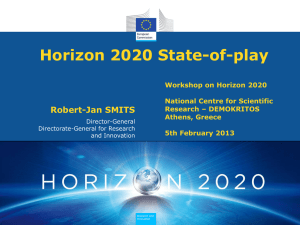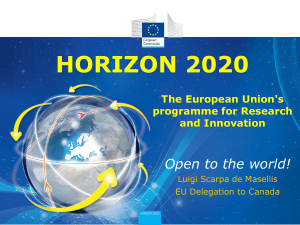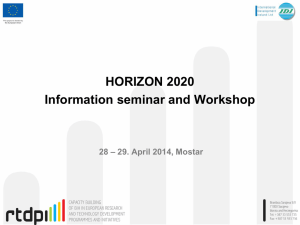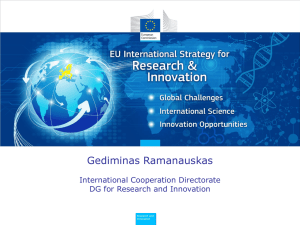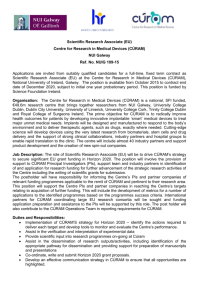Link to the PowerPoint presentation
advertisement
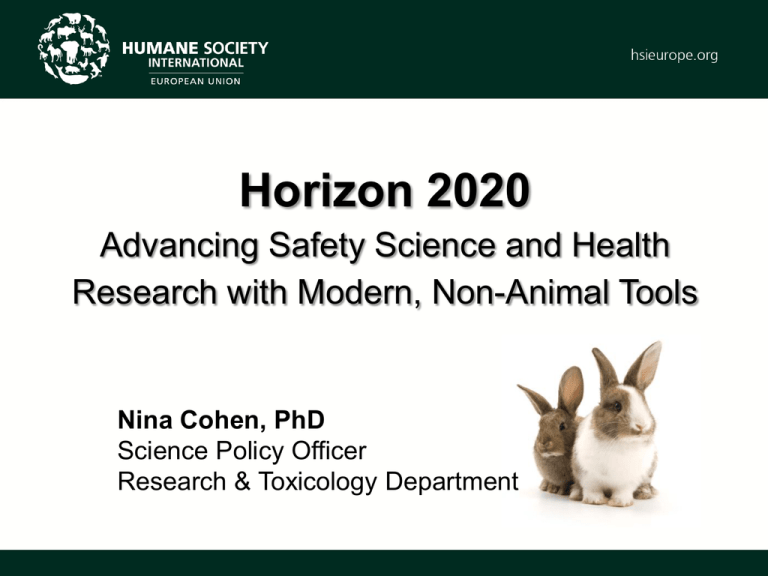
Horizon 2020 Advancing Safety Science and Health Research with Modern, Non-Animal Tools Nina Cohen, PhD Science Policy Officer Research & Toxicology Department About HSI • One of the world’s largest animal protection organisations • • • EU activities • • • • 11+ million members globally Programmes in Australia, Canada, China, Europe, India, Latin America, New Zealand, United States & beyond Shark-finning Seal products trade Animal experiments (directive, cosmetics, REACH, biocides, Horizon 2020) Approach • • Science-driven Representing views of supporters during policy-making & legislative processes Replacing Animal Tests » Policy Drivers DECISION NO. 1982/2006/EC ON FP7 • “Research activities should … reduce the use of animals with a view ultimately to replacing animal use.” REACH – ARTICLE 1.1 • “The purpose of this Regulation is to ensure a high level of protection of human health and the environment, including the promotion of alternative methods for assessment of hazards of substances, …” COSMETICS DIRECTIVE – ANIMAL TEST & MARKETING BANS Replacing Animal Tests » Scientific Drivers POOR PREDICTORS OF HUMAN SITUATION • • Species differences in genetics, biochemistry, etc. do matter 9 out of 10 animal-tested drugs fail because they’re not effective in humans or present safety concerns POOR EFFICIENCY • • Animal tests can take months or years per chemical Not suitable for testing tens of thousands of chemicals, mixtures, etc. LIMITED BIOLOGICAL UNDERSTANDING • Animal tests tell us little about how chemicals cause toxic effects Horizon 2020 » Commission Proposals KEY OBJECTIVES • • • Tackling societal challenges Creating industrial leadership Promoting scientific excellence SOCIETAL CHALLENGES INCLUDE… • Alternatives to animals for safety & effectiveness testing • Greater use of non-animal tools (e.g., “-omics, human cell systems) in health research to better understand human disease “21st Century Toxicology” (Tox21) Approach “… envisions a not-so-distant future in which virtually all routine toxicity testing would be conducted in human cells or cell line in vitro by evaluating cellular responses in a suite of toxicity pathways using high-throughput tests, that could be implemented with robotic assistance.” —US National Research Council “Animal testing won’t disappear overnight, but the agencies’ work signals the beginning of the end.” —Dr Elias Zerhouni, Former Director, US National Institutes of Health “21st Century Toxicology” (Tox21) Approach Horizon 2020 » HSI Priority #1 EUROPEAN “TOX21” FLAGSHIP RESEARCH INITIATIVE* • • • Uncover how chemicals disrupt normal processes in the human body at the level of genes, proteins & cells (“pathways of toxicity”) Develop human-relevant cell systems to test for disruptions Develop computer models to relate cell test results to real world KEY FEATURES • • • “Top-down” strategic focus Public-private partnership with industry International collaboration * AS SUGGESTED BY THE EU FP7 COORDINATION PROJECT AXLR8 Horizon 2020 » HSI Priority #2 BETTER TOOLS FOR HEALTH RESEARCH • Prioritise research to define human “disease pathways” • Increase proportion of EU health research funding dedicated to human biology-based (non-animal) tools ETHICAL CONSIDERATIONS • More robust ethical & scientific merit review processes for EU-funded animal experiments • Substantiation of claims regarding human-relevance of animal models • Retrospective assessment of all EU-funded vertebrate experiments expected to cause more than “moderate” suffering, regardless of species Horizon 2020 » Next Steps TIMETABLE & MILESTONES • 4 May – Draft report sent for translation • 15 May – ‘Human Toxome Project’ event hosted by Vittorio Prodi • 30-31 May – Consideration of draft report • 7 June – Deadline for tabling amendments • 11 July – 1st consideration of amendments • 24 September – 2nd consideration of amendments • 8-9 October – ITRE committee vote « Please support HSI amendments Questions? Thank you! EUROPEAN UNION hsieurope.org

